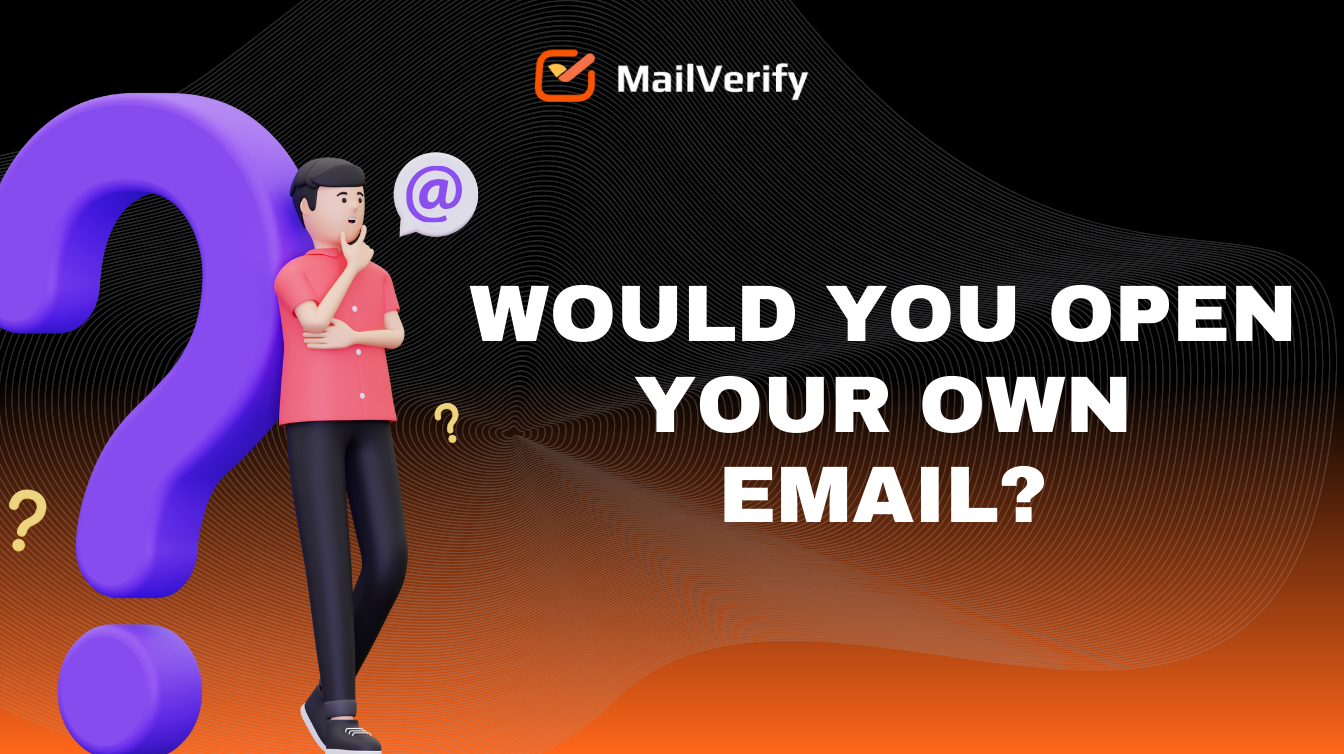Every email you send carries a purpose- whether it’s reaching out to a client, sharing important news, or confirming plans. But what happens when your email never reaches its destination?
Email deliverability issues can disrupt communication, often for reasons that may surprise you. From simple typos to technical glitches, understanding the root causes can help you take action. This guide explores six common reasons emails fail to deliver and how MailVerify.ai can help ensure your messages always land where they should.
1. Incorrect Email Address- The #1 Cause of Email Failures
We’ve all been there- you send an email, only to receive a bounce-back notification because of a typo or an outdated domain. A small mistake can prevent your message from ever reaching the recipient.
How to Prevent It:
- Double-check before sending – Always verify the recipient’s email before hitting send.
- Use an email verification tool – MailVerify.ai can instantly validate email addresses, ensuring you’re sending to a legitimate inbox.
- Maintain an updated contact list – Regularly clean your email database to remove inactive addresses.
- Be cautious with autocomplete – It may pull in old or incorrect email addresses, leading to failed deliveries.
- Confirm with the recipient – If unsure, verify the email through another communication method before sending.
A simple verification step with MailVerify.ai can save time and prevent email failures before they happen.
2. Your Email Got Caught in Spam Filters
Ever wonder why an email never gets a reply? It may not be your recipient—it could be their spam filter. Email service providers analyze subject lines, content, and sender reputation to flag potential spam.
How to Avoid Spam Filters:
- Write clear subject lines – Avoid misleading phrases like “URGENT!!!” or “WIN BIG!”
- Balance text and visuals – Too many images and too little text can trigger spam flags.
- Avoid spam-trigger words – Overusing “free,” “guaranteed,” or “urgent” may land your email in spam.
- Authenticate your email domain – Ensure your domain is properly configured with SPF, DKIM, and DMARC settings.
- Test before sending – Use MailVerify.ai to check your email’s spam risk before sending it.
By following best practices and using MailVerify.ai’s tools, you can maximize your email deliverability.
3. The Recipient’s Inbox Is Full
Sometimes, the problem isn’t you—it’s them. A recipient with a full inbox will not receive new messages until they clear space.
What You Can Do:
- Wait and retry later – The recipient may eventually free up space.
- Reach out through another channel – A quick message via phone, text, or LinkedIn can alert them to check their email.
- Ask for an alternate email – If this happens frequently, request a backup contact.
MailVerify.ai can help you identify inactive or full inboxes before sending, so you don’t waste time on undeliverable emails.
4. Recipient’s Email Server Issues
Technical glitches happen. Server outages, maintenance, or system failures can temporarily block email delivery.
What to Do:
- Be patient – Server issues are often temporary.
- Check your email status – Your provider may indicate if the problem is on the recipient’s side.
- Follow up another way – If urgent, try calling or messaging the recipient.
- Resend strategically – Avoid resending multiple times during downtime to prevent spam flags.
With MailVerify.ai’s real-time verification, you can detect server issues before sending, reducing email bounce rates.
5. Your Email or Domain Is Blacklisted
If your emails keep bouncing or landing in spam, your domain might be blacklisted. This can happen if you send too many emails too quickly, use flagged content, or get marked as spam too often.
How to Fix and Prevent Blacklisting:
- Monitor blacklists – Use MailVerify.ai’s blacklist monitoring tool to check if your domain is flagged.
- Follow best practices – Send emails only to people who have opted in and avoid spammy content.
- Authenticate your domain – Use SPF, DKIM, and DMARC to verify your legitimacy.
- Request removal – If blacklisted, contact the provider for delisting.
- Track your email performance – Regularly review bounce rates and complaints to catch issues early.
MailVerify.ai helps protect your email reputation, ensuring your messages reach the inbox and not the blacklist.
6. Your Attachments Are Too Large
Attachments are useful but can cause emails to bounce if they exceed size limits. Most email providers restrict attachments to 10MB–25MB.
How to Handle Large Files:
- Compress files – Use ZIP or RAR tools to reduce file size.
- Use cloud storage – Google Drive, Dropbox, or OneDrive let you share files via links instead.
- Try file transfer services – WeTransfer and Hightail allow large file sharing without email limitations.
- Optimize formats – Resize or convert images and PDFs to smaller file sizes.
- Split large files – Send smaller portions across multiple emails, clearly labeling them.
MailVerify.ai can detect emails that exceed size limits before sending, ensuring smooth communication.
Final Thoughts: Prevent Undelivered Emails with MailVerify.ai
Email mishaps happen, but most issues have simple solutions. Whether it’s an incorrect address, spam filters, or blacklisting, MailVerify.ai provides the tools to verify, monitor, and optimize email deliverability.
Key Takeaways:
✅ Verify email addresses before sending to avoid bounces.
✅ Follow email best practices to stay out of spam folders.
✅ Use MailVerify.ai to monitor blacklists and maintain a strong sender reputation.
✅ Check for server issues and full inboxes to prevent undelivered messages.
✅ Optimize attachments to ensure smooth email delivery.
Don’t let undelivered emails hold you back. With MailVerify.ai, you can ensure your messages always land in the right inbox.
Try it today and take the guesswork out of email deliverability!

